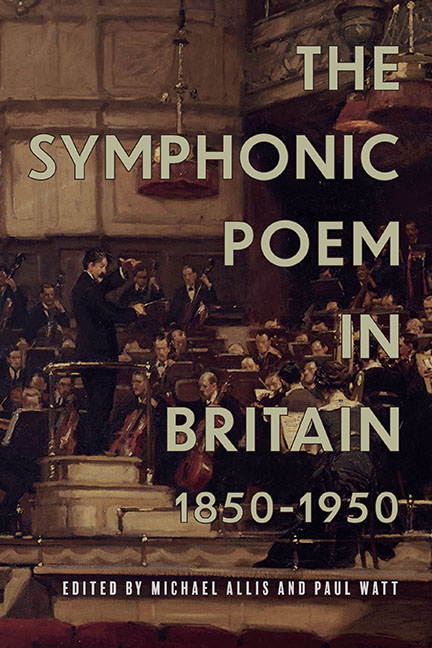10 - Frank Bridge: Poems of Re-enchantment
Published online by Cambridge University Press: 23 October 2020
Summary
❧ Introduction
NOT only does the symphonic poem run as a developing thread throughout the compositional career of Frank Bridge (1879–1941), but the whole period is one of unprecedented social and cultural change. Just as the tone poem itself was a nexus of genre transformation, Bridge represents a developing cosmopolitanism that stems in part from his multifaceted career as a composer, conductor and performer. All this in London, a city which in the first half of the twentieth century hosted a constant stream of continental musicians to satisfy a diverse native appetite. In these contexts issues surrounding how we theorise ‘influence’ are of vital importance as we reflect on fashions, receptions and cultural meanings. Already the need to balance the complex pluralism at play here is apparent, but I want to argue that whilst several authors have broken down Bridge's compositional career into three periods, it is actually the unity of purpose in his music that points to a unified, post-Nietzschean, life philosophy.
Born in Brighton, Frank Bridge's early musical career began in pit orchestras, playing for his father. Thus when he arrived at the Royal College of Music in 1899, he was unique amongst his contemporaries in having practical experience of theatre music, from the high art music of opera, ballet and symphony, through to the more popular avenues of operetta and ‘light’ salon music – a stylistic world that was rarely acknowledged within institutions like the College. Although the intake of the RCM under Sir Hubert Parry was seemingly blind to social class (from upper-class individuals such as Ralph Vaughan Williams and later Arthur Bliss, to working-class students on full scholarships such as Herbert Howells and Ivor Gurney), there was no doubt that the musical curriculum experienced, once there, was focused on high art music, despite the diverse employment that its graduates subsequently enjoyed. Bridge's orchestral experience came from a busy freelance life of playing and conducting in a range of theatres and concert halls, and as a student (as with all of Stanford's pupils) he attended all of the RCM's orchestral rehearsals as an observer (even if he was not actually playing in the orchestra himself). Upon leaving the RCM he continued to pursue a portfolio career as a composer, orchestral conductor and string player, until the patronage of Elizabeth Sprague Coolidge from the early 1920s allowed him to concentrate his efforts on composition.
- Type
- Chapter
- Information
- The Symphonic Poem in Britain, 1850–1950 , pp. 305 - 330Publisher: Boydell & BrewerPrint publication year: 2020



